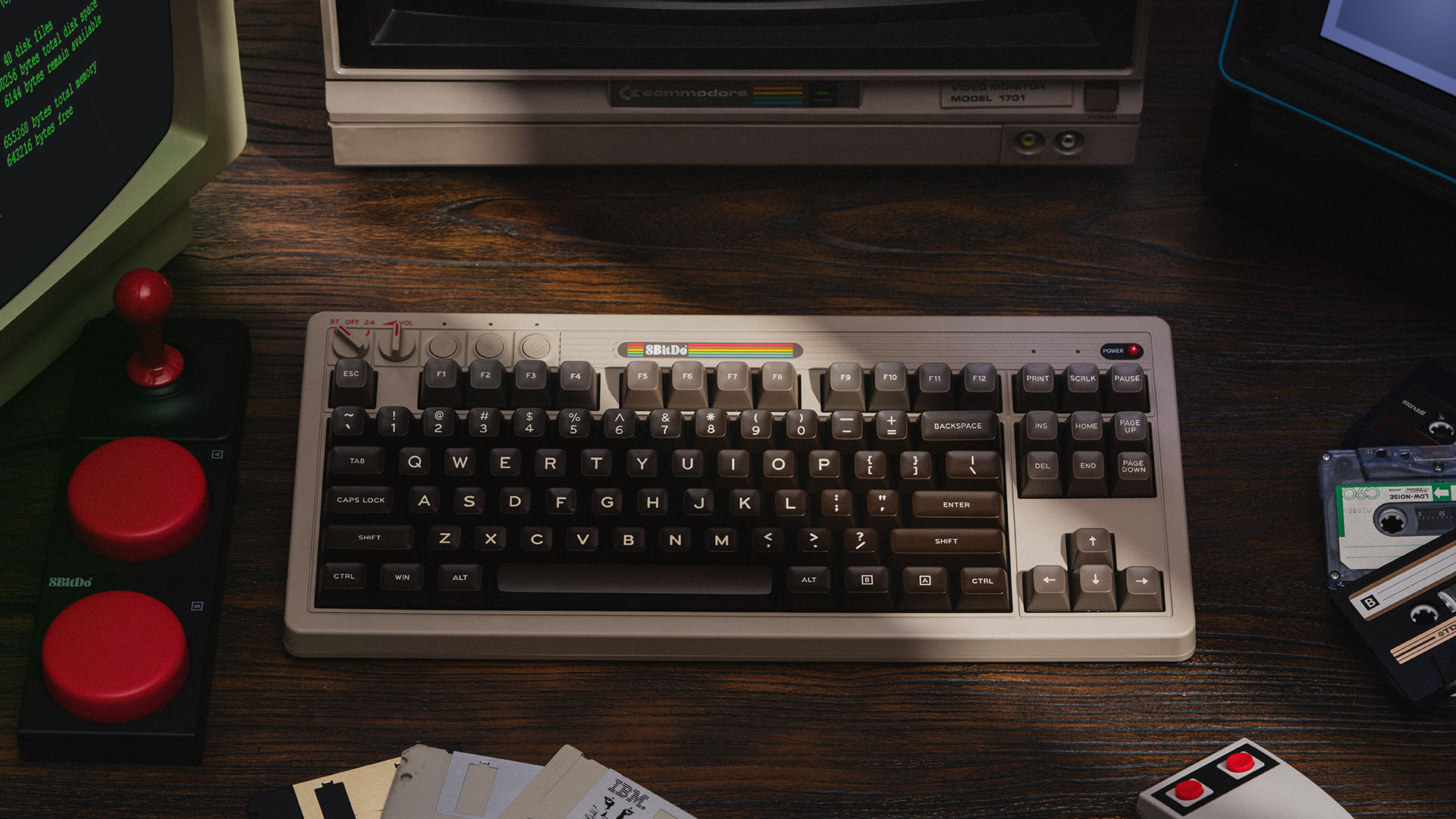My work computer has been trying to fly away for a half hour. I switch over to look at it and see this. Thanks, Microsoft and OneDrive. Great stuff.
Category: Technology
Microsoft: It’s not Your Computer
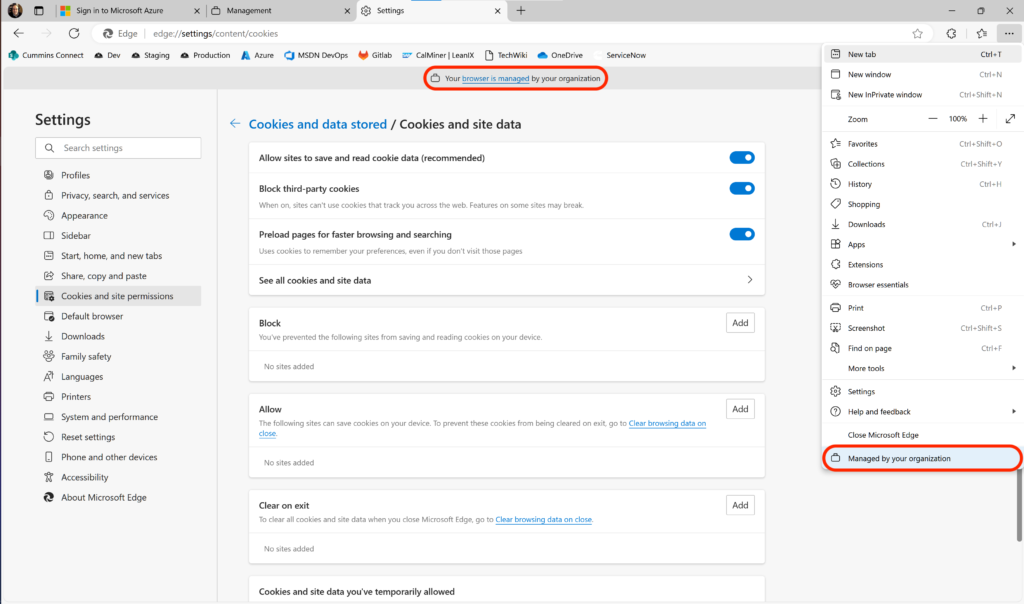
Either Microsoft changed something automatically with the way I log into the Azure portal, or #CorporateIT tried to fix something I complained about without telling me, but either way, I’m trapped in a loop of confirming I’ve done the thing I’m supposed to do. So I go to clear cookies, and I’m treated to not one, but two different messages informing me — as if I didn’t already know — that I don’t own this computer.

I see these messages in the browser, in every Office app, in OneDrive, and in the Windows settings. I get it. I got it. I’m good. Thank you for the continual reminder that literally every single keystroke, sound I make, image the camera can see, file I look at, email I send, web site I use, and everything else I’m tired of typing into this list is logged and reviewed by people who can somehow not go insane by looking at reports like this from 80,000 users. (If there were a use for AI to get its feet wet, this would surely be it.)
You may think I’m exaggerating, but many years ago, I got caught up in a kerfluffle with IT, and literally had someone look me dead in the eye and tell me that he reviewed every single file that got transferred to or from a USB drive connected to a computer. He said this as if I were supposed to be scared; like he was looking for a reaction that I should be worried. I just told him, “I know,” and moved on. This wasn’t something that was being advertised, but I easily inferred it by everything else going on in the way the company approaches IT. It seemed like he didn’t know how to process that.
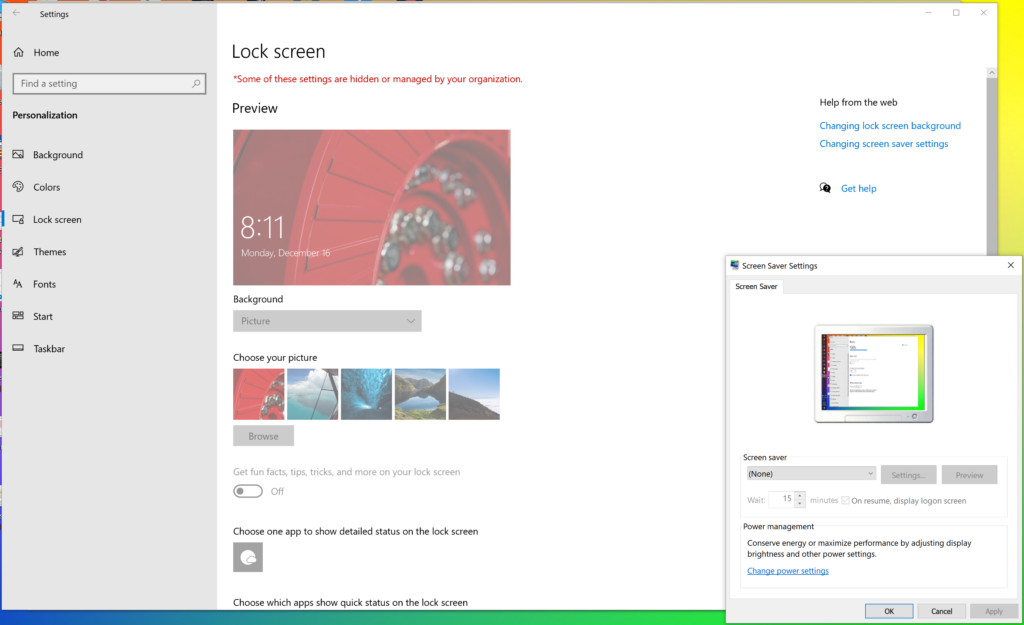
Tangentially, I think this is why the Microsoft phone died. Microsoft lives and breathes by the average Fortune 500 IT manager — let that sink in — and of course people who bought a Windows phone wanted to connect it to their corporate email. When they tried, they got scary messages that the company could see everything they did with their phone, and remotely wipe it on a whim. I expect most (like me on my iPhone) backed out of the process, and then asked themselves what the advantage was of a Windows phone over others. For decades, it’s become routine for companies to make sudden, sweeping personnel changes, and who wants to wake up to a wiped phone because your company missed its projections for a second quarter in a row? I’m sure they’re only eliminating the people who had something to do with that, right? Right?
Our electronics our very, very personal. This is why people mostly choose Apple products when spending their own money. There is much more “telemetry” going on with Apple products than I would like, and they keep making moves to transform macOS into the same sort of walled garden that iOS is, but Apple is at least presenting an overall message that your stuff is your stuff, and they seem to making the right moves to ensure that. Time will tell, I guess.
Almost everyone has to use Windows at their job. Every company with a fleet of Windows computers is doing these sorts of things, because some upper manager hired some top-4 consulting company who told them they had to, and now everyone distrusts their company and Microsoft. That shows up on the bottom line.
Microsoft has a glorious opportunity to create a new version of Windows for personal use that flips the script. A version where there’s no telemetry and no artificial restrictions on hardware. Instead, they’re quintupling down on their user-last philosophy, and trying this. (Again.) The Windows terminal computer, with no local storage. It’s just a KVM to a Windows image running in their cloud. There will be — there cannot be — any hardware upgrades or gaming or piracy or anything else interesting. And for what? What’s the upside for the user? They still have a “computer” on their desk. What are they getting for the tradeoff? Who would want this?

I’m betting that part of this introduction is a whole fleet of “AI-enhanced” tracking of literally everything going on with the “computer,” so that IT departments can “simplify” this critically-necessary piece of “infrastructure” in their “security” posture, and I’d bet key people in my IT department are touching themselves thinking about foisting it on everyone who doesn’t have to have some sort of engineering or development tool.
The Hell that is OneDrive
My PC — the PC I bought for precisely one game — came with Windows 11 pre-installed. Now, I hate Windows, and I expect it doesn’t like me much either, and that’s fine. For the sake of a game or two, I can live with it. One of the more annoying things I’ve found with Windows is their implementation of cloud storage, with their OneDrive.
I decided to make the effort to “break it” so that everything would just live on my local hard drive, and it made a dog’s breakfast out of the folder structure. It was only after this that it was revealed that folders like “Documents” actually live under a folder hierarchy with “OneDrive” in the path, and I don’t want to try to clean it up for fear of losing files. I don’t have anything worth keeping except the mods for ESO, but it would be a shame to lose them if Microsoft decided to lose its mind here.
First, I’ll admit that there is something to keep straight on Mac’s with iCloud storage enabled. On my MBP, I have this:

There are two locations for “Documents”, but one is “Documents – Local” and one is “Documents – iCloud.”
On my corporate Windows laptop, I have this:
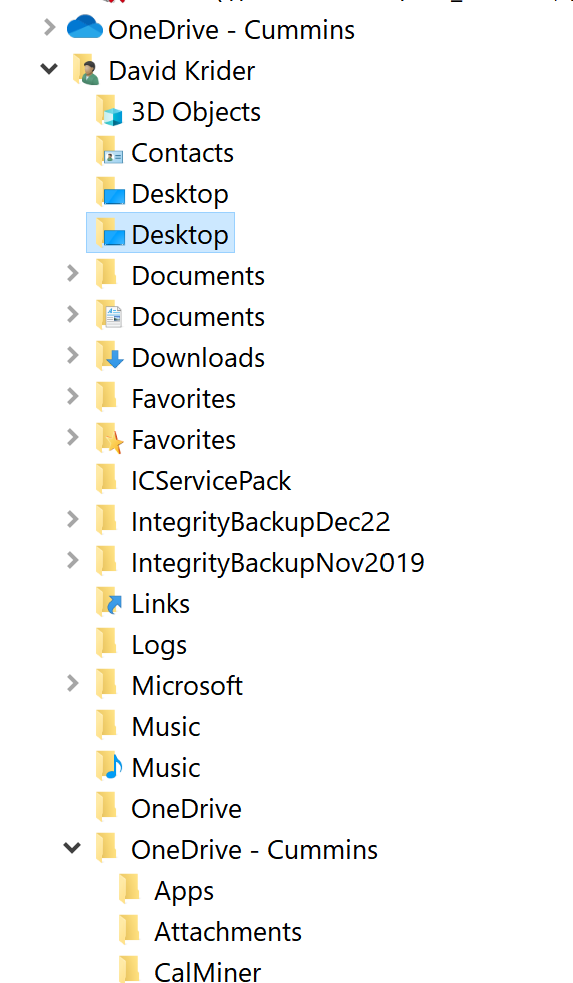
I have two sets of folders mixed into the same namespace. I have no idea which is which. I have multiple links to Desktop’s and OneDrive’s.
Even worse, in the larger folder pane, EVERYTHING listed here is under ANOTHER “Desktop” folder, and ANOTHER “OneDrive” sits at the same level of “My Computer.”
How is anyone supposed to navigate this? How is anyone supposed to find anything? Windows search has NEVER worked. EVER. What were they — what was anyone — thinking!? This is madness.
UPDATE: I spent an hour and cleaned this mess up — only to have it get re-messed-up when I logged into another computer, of course. And now that I deleted the extraneous folders and duplicates, the script that did this — which is still running every time we start the computer — is throwing an error. So I got that going for me.
More AI for all the Corporate IT Things
Last month, I was talking about how I didn’t understand what my bluechip Fortune 250 is doing with AI. From AI for all the Corporate IT Things:
Well, it’s a good thing I don’t understand, because he’s not talking about using AI to fix IT. He wants to use “technology” to improve our “safety-ness.” Say wha..? Like, he wants to use AI to improve safety on the factory floor. Huh?! Are we going to buy Tesla robots to pull people’s fingers out of the way of presses?! I’m confused.
I sat in a Zoom call where someone discussed the first pilot program for our official corporate AI efforts. On the one hand, they’ve done exactly what they said they were going to do. They’re trying to use AI to try to reduce OSHA incidents. Surely that’s a noble effort, right? But on the other hand, I have trouble imagining a real-world scenario that would be less applicable to AI. I mean, first of all, safety incidents are already scrutinized with a microscope. Second of all, there are so relatively few, I don’t believe you can use AI to analyze them. There’s not enough data to establish patterns. On top of that, every incident is an outlier, and gets dealt with immediately, and not in a performative way, but, like, for real. New rules are put in place, guard rails are installed, etc. So these outliers are very, very unlikely to happen again. Ergo, the data is not statistically significant, and whatever else you know about AI, it’s ALL based on statistics. So I don’t get it.
The other thing that strikes me is that we’re using — er, “renting,” I’m quite certain, and at an exorbitant rate — an off-the-shelf AI product called GenAI by Palantir. You know, the love child of the so-called Five Eyes multinational intelligence conglomerate, and the company that spies on everyone, everywhere, all of the time. So we’re not using our company’s vast resources to invest in creating our own AI models. We’re just paying our contractors to learn how to operate someone else’s machine. In this golden age where instructions on how to create models are readily accessible, and the coding libraries to implement them proliferate, we’re eschewing the opportunity to create custom models that could help our specific business problems.
Over a year ago, I talked with people about what I think we could do with AI, but I didn’t get anywhere. In the past months, several other engineers have spoken to me about similar ideas. In the part of the company I inhabit, there is a glaringly obvious use for AI staring us in the face. The problem is that we don’t have all the data we need to make it work, and getting the owners of the systems we would need to tie together with our data to open up their databases to us is simply impossible from where we sit. That sort of thing is simply never going to happen without a strong, direct proclamation from the CEO, and, even then, getting those people to give up some of their “power” in the company so that someone else can have more is going to be fought up and down the org chart. So we seem stuck. The only things we can use AI for won’t matter, and the things that would make a difference will never be done.
AI for all the Corporate IT Things
I got an email with a link to a “town hall” about IT. I said to myself, alright, I dare you to tell me something interesting or actionable, and started watching the replay.
The CIO leads off, of course. His first slide is about DEIC, and celebrating/observing Black History Month and the Lunar New Year.
Sigh.
I mean, that’s great and all, but that’s 10 minutes we’re not talking about IT, which is what this meeting is supposed to be about, and which is all I care to hear about. I seriously doubt that people in, say, Europe or China care much about the US Black History Month, or that people in the US care about the Chinese Lunar New Year, for that matter. But, sure, let’s waste time pandering in the name of the current thing.
And then he says he’s able to relax, now that we know Taylor Swift was going to the at the Super Bowl. He doesn’t know what teams were going to play, but he spent a few minutes talking non-ironically about Swift being there.
Again, I mean, that’s great and all, but a half hour in, we’ve now spent thousands of man-hours not talking about IT.
When we finally get around to talking about, you know, information technology, and I find out that we’re apparently using AI to modernize our “corporate operating system.” I know a little about AI. I know a lot about how our internal procedures and organizational systems works. I do not understand how we can get AI to fix any part of this.
Well, it’s a good thing I don’t understand, because he’s not talking about using AI to fix IT. He wants to use “technology” to improve our “safety-ness.” Say wha..? Like, he wants to use AI to improve safety on the factory floor. Huh?! Are we going to buy Tesla robots to pull people’s fingers out of the way of presses?! I’m confused.
Next, we’re apparently going to minimize all “risks” to IT uniformly, without specifying or identifying what any of those “risks” are. So, at least we’ve got that going for us, which is nice. We’re going to do this by 1) reducing “new” findings, 2) eliminating repeat “findings,” and 3) closing “findings” faster. Well, that certainly seems simple. A little light on details, but I’m sure we’ll figure it out.
Then we’re going to “partner” with AI, and it’s going to help us be more “exponential.” Except that we’ve also been sent a company-wide email that says we’re not allowed to use AI for, well, anything!
After an hour and a half, I gave up watching. I just want to note that the leader of “transformation” just bought a new-fangled “Mac” and says he’s “challenged” to set it up.
Apple and Corporate Limits
It’s become clear over the past 20 years that we’re headed for the megacorp cyberpunk version of dystopia, where it’s more important who you work for than which country you live in. I think there ought to be many limits on corporations: market cap, employees, levels of horizontal or vertical scaling, etc. When a limit is tripped, they should be forced to divest into *competing* interests, not collusive.
You can say it’s great that Apple has become the single-source provider for OS, computer, tablet, phone, headphones, music, TV, storage, AND CREDIT CARD, and I use all of that, but it’s creepy and weird that we let companies have this much concentrated control over our lives. These areas should be broken up.
Wouldn’t it be great if we had more viable choices for operating systems and hardware platforms? Maybe the work involved in bringing a modern operating system or a new CPU to market precludes having more than 2 or 3 players. But there’s no inherent reason to have a credit card from a computing platform vendor. Any bank could offer a similarly great app for your phone. They just choose not to.
Found an AI Bot on Twitter
I was making a snarky comment on a post about how hackers should break into banks’ IT systems, and delete everyone’s loan information, and this happened.
The account has me blocked now. Surprise, surprise.

Windows Being Windows, Shills Being Shills
Windows stays prominent because Microsoft caters to corporations which abuse the poor, defenseless OS into doing things like locking users out of changing the desktop background and the sleep timeout. Until Apple offers power-hungry corporate IT middle managers the same level of user-hostile malfeasance in the name of “security,” Microsoft will hold the high ground in corporate deployments.
This becomes a self-perpetuating cycle of not-so-micro-aggressions, as the corporate use of Windows continues to skew all the Microsoft-bought-and-paid-for industry polls that show how much more prevalent Windows is over OSX, and self-justify corporate America that they’re doing the right thing by continuing to stick with it. This, in turn, leads to an entire sub-industry of corporate “security” software which must be installed on Windows, because, well, the bought-and-paid-for auditors told them they had to.
Thus, I wind up with a corporate laptop with 3 different “endpoint” security products installed on it, and something like 30-40 different scripts and checks that run almost by the hour to make sure that the inherent weaknesses of Windows hasn’t compromised our precious meeting PPT’s, which #CorporateIT apparently considers as sensitive as the US nuclear arsenal codes.
Apple offers an alternative to this madness, and I’m very glad they do. In my experience, almost no one runs Windows personally, except for gaming purposes. Numbers like StatCounter vastly over-report Windows usage, because everyone working for a large corporation and in the government is forced to use Windows.
I wish someone would produce a market share report that 1) separates corporate purchases and 2) includes phones as primary computing devices. I think we would see that the “computing world” is vastly different than Gartner would have us believe.
Glory Days
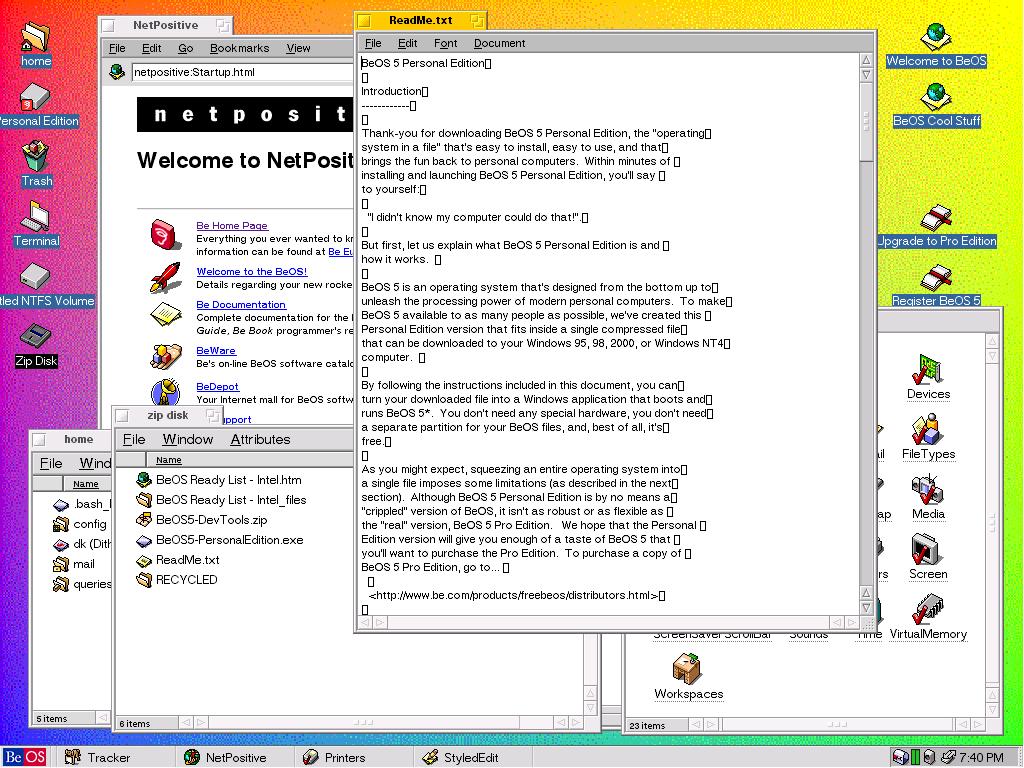
I legitimately miss this age of computing. RedHat Linux 6, Windows 98 and NT 4, Mac OS X, Solaris, HP-UX, IRIX, AIX, and BeOS. It was a great time to be a “computer guy.” We were all trying to figure out what it could be. Now we have <gestures at everything>… this.
Fun fact: Be (the company) noticed this screenshot and comments I made about their OS on my website back in those days, and sent me an actual CD with the latest version.
Well, Crap; There Goes another $110
Meet the new C64 Edition from the 8BitDo Keyboard line. Packed with programmable keys and an intuitive control panel.. Compatible with Windows and Android.
This hits all the right notes for me. I recently bought a full set of SA Retro keycaps for my WASD CODE v2 (in blues), on my Mac. While pricey, I love them. I get warm fuzzies every time I sit down at it. I use this board on my Mac, and out of a dozen mech’s I’ve tried, I just don’t think it gets any better than a WASD.
The article also mentions new buckling spring boards. I have a Mini M from Unicomp on my work computer. The action doesn’t seem as crisp as I remember on actual Model M’s from back in the 80’s, but given that it’s supposed to be the same internals, made on the original tool dies, I have to chalk it up to memory. I like it too.
For “just” $110, I will probably buy one of these. I don’t have a Kailh-based board, though I’ve liked the feel of that brand of switches in various testers I have.
Sigh.
<gets out wallet>

